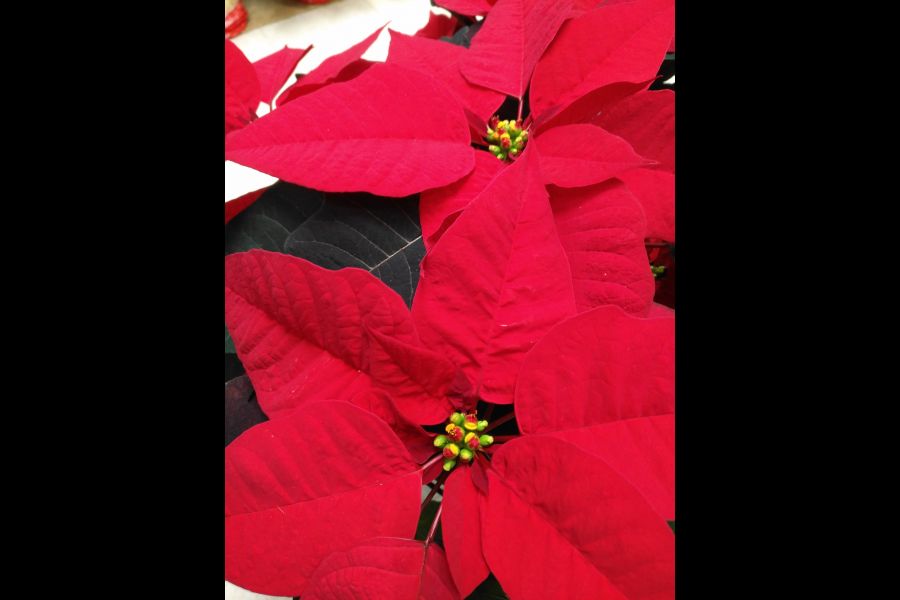When you think of Christmas, what is the first flower that comes to mind? Your answer is probably “poinsettias.”
It has long been accepted as the official Christmas plant. But where did this history of poinsettias and Christmas begin?
A native of southern Mexico and Central America, the poinsettia is considered there to be a weedy plant. When I travelled to Guatemala several years ago, I saw the tall gangly plants growing just about anywhere, sometimes reaching 15 to 20 feet tall – or more. Definitely not the compact bushy plants that we have come to know.
So how did this plant become associated with Christmas? As the old Mexican legend goes, a young girl named Pepita was sad that she didn’t have a gift to leave for the baby Jesus at Christmas Eve services. Her cousin tried to comfort her and said Jesus would love anything that she brought for him even if she had no money to buy a real gift.
Pepita picked a bouquet of weeds that she was walking past on the way to church. When she got there, she set the weeds down at the bottom of the nativity scene. All of a sudden, the weeds transformed into beautiful red flowers. From that day on, they became known as “Flores de Noche Buena” or “Flowers of the Holy Night.”
Poinsettias owe their common name to Joel R. Poinsett, who introduced them to the United States when he was the first American ambassador to Mexico, from 1825 to 1829. Poinsett, who was an amateur botanist, noticed the Euphorbias with red bracts growing wild in the hills of southern Mexico.
He sent a few home to South Carolina for his personal collection, where he began propagating them in his greenhouses and giving them to friends and botanical gardens. It still took about another 100 years before the poinsettia became a traditional holiday decoration, when the Ecke family started promoting them.
Paul Ecke Jr. sent free poinsettia plants to TV studios across the country, including “The Tonight Show” and Bob Hope’s holiday specials. Eventually, the trend caught on, making them the familiar live Christmas decoration that they are today. Over many years, breeders have developed the plants so that they are much fuller, shorter growing varieties that come in an array of different coloured bracts.
When choosing your poinsettia, look for a plant where the flowers are still tightly closed. Many consider the red colour to be the flowers but they are actually coloured bracts or modified leaves. The actual flowers are the tiny group of buds where the bracts come together.
If these buds are still closed at time of purchase, that means that it will last that much longer. Make sure you choose a sturdy-stemmed plant with no drooping or yellowing leaves. These are signs that the plant may have been under-watered or in its plastic sleeve too long.
Poinsettias are easy to care for as long as you are aware that they are sensitive to cold temperatures. If transporting them on a cold day make sure you cover them completely with a loose-fitting bag, hurry them out to a warmed-up car and head right home to get them inside.
Once in your house, they do best with about six hours of sunlight a day. Ideal daytime temperatures are 15 to 20C. At night you can drop the temperatures down to 12 to 18C.
Make sure that the poinsettia is placed away from cold drafts from opening exterior doors and or from blasting heat ducts. Let the surface of the soil begin to dry before watering.
Joanne Young is a Niagara-on-the-Lake garden expert and coach. See her website at joanneyoung.ca.











